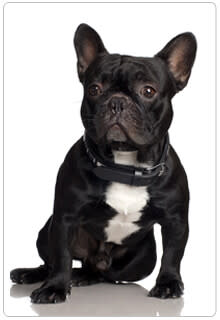
Do you have a purebred dog you’re heard requires special considerations under anesthesia? If so, you’re not alone. Lots of dog owners are told by breeders, friends, dog park acquaintances, and Dr. Google that their particular breed suffers from an unduly high anesthetic risk.
Many times this information is couched in terms of “breed sensitivity,” which is perhaps not the right terminology to apply. That’s because very few breeds suffer true anesthetic sensitivities. Instead, many suffer from a higher risk of anesthesia complications in general due to one of potentially many breed-specific differences.
Looking at it this way, there are few dogs who don’t suffer from certain anesthetic risks. Which is something every veterinarian understands. That’s why each anesthetic patient should be treated like an individual with an anesthetic protocol tailored to his or her specific needs.
None of this is meant to scare you. In fact, it should reassure you to know we consider these issues on a patient-by-patient basis. So that you better understand what your individual pets might be up against (and to help you ask smarter questions of your vets), read on…
#1 Brachycephalic Breeds
These breeds are not more sensitive to anesthesia, as many of my short-faced, snub-nosed, bully breed owners assume. Rather, they’re simply riskier candidates overall, given their myriad respiratory issues. Here’s why:
Bully-faced breeds suffer from brachycephalic airway syndrome, a condition that’s characterized by small nostrils, an elongated soft palate, potentially everted laryngeal saccules, a skinny trachea that draws air poorly into the lungs, and a fleshier upper airway overall. Whenever they’re anesthetized, their upper airway has a tendency to contract and narrow even further, possibly cutting off their air supply if they’re not safely intubated at all times.
Before and after Bulldogs are intubated during an anesthetic procedure, these dogs must be carefully monitored for signs of airway obstruction. And certain drugs should perhaps be avoided because they might cause greater respiratory depression or create conditions that might exacerbate upper airway contracture.
And there’s something you may not have thought of: Brachycephalic cats (like Persians and Himalayans) are also at higher risk.
#2 Sighthounds
Sighthounds (such as Greyhounds, Salukis, Italian Greyhounds and Whippets) are the one breed class we do consider to suffer from true anesthetic sensitivities. Their peculiar metabolism and genetic make-up is such that their bodies actually metabolize drugs differently.
Sedatives can be more profoundly felt and drugs are metabolized more slowly overall. A slower (but safe) recovery time is expected with certain drugs and sedative drugs in general will require lower doses. Thiobarbiturate drugs, once the mainstay of anesthetic induction, are no longer recommended in these dogs.
#3 Low Body Fat
The reduced percentage of body fat in sighthounds means they’re at greater risk for hypothermia during anesthesia. Warming is therefore especially important for these breeds. But this is the case for all dogs with low body fat, not just sighthounds. Plenty of mixed breed dogs with sighthound genes must be treated similarly.
#4 Herding Breeds
This group of dogs includes the Collie, Border Collie, Australian Shepherd, and the Shetland Sheepdog. Unfortunately, the topic of anesthetic risks in this breed family is considered controversial, even among veterinary anesthesiologists. Nonetheless, it’s clear that members of these breeds have a high prevalence of a genetic mutation in the ABCB1 gene (also called MDR1), a trait that allows some drugs to accumulate within the brain.
This includes anesthetic drugs like acepromazine and many opioids. Pronounced sedation and respiratory depression are consequently considered common side effects of these meds in these breeds. But that doesn’t mean these dogs can’t have these drugs included in their anesthetic protocols. Reducing the dose of these drugs by 25% and monitoring carefully for side effects is always recommended.
#5 Toy Breeds
Because of their size, tiny breed dogs are considered special anesthetic candidates. Careful drug dosing and monitoring under anesthesia are especially crucial.
Because they have a greater body surface area and a higher metabolic rate, lower body temperatures and hypoglycemia can result more readily in these breeds. That’s why it’s important to keep them warmed during even the briskest procedures and possibly even monitor blood glucose levels during longer bouts of anesthesia.
#6 Giant Breeds
Giant breeds often respond profoundly to certain kinds of drugs, presumably because of their low surface area to body mass ratio. Sedatives, in particular, should perhaps be titrated to effect using smaller doses to forestall too deep an anesthetic plane.
#7 Doberman Pinschers
This breed suffers from two potentially risky genetic predispositions to disease: Dilated cardiomyopathy and von Willebrand disease (which interferes with blood clotting) can both predispose pets to severe complications during surgery. Evaluating Doberman patients for these diseases is crucial before anesthesia.
#8 Boxers (of UK lineage, in particular)
In a subpopulation of Boxers in a line out of the UK, acepromazine will cause severe bradycardia (a low heart rate), hypotension, and even collapse. Reduced dosing is recommended. But if your Boxers aren’t from the UK, you can rest easy on this score.
#8 Breeds that suffer cardiac diseases
For dogs (or cats, for that matter) from breeds highly predisposed to cardiac diseases (such as Dobermans, Cavalier King Charles Spaniels, Boxers, etc.), special care must be taken to rule out the presence of existing heart disease before anesthesia. If heart disease is identified, the use of certain drugs is no longer recommended.
If necessary, however, anesthesia can be safely applied to these patients. The key is knowing about it ahead of time. If possible, consultation with a cardiologist is always recommended before the procedure.